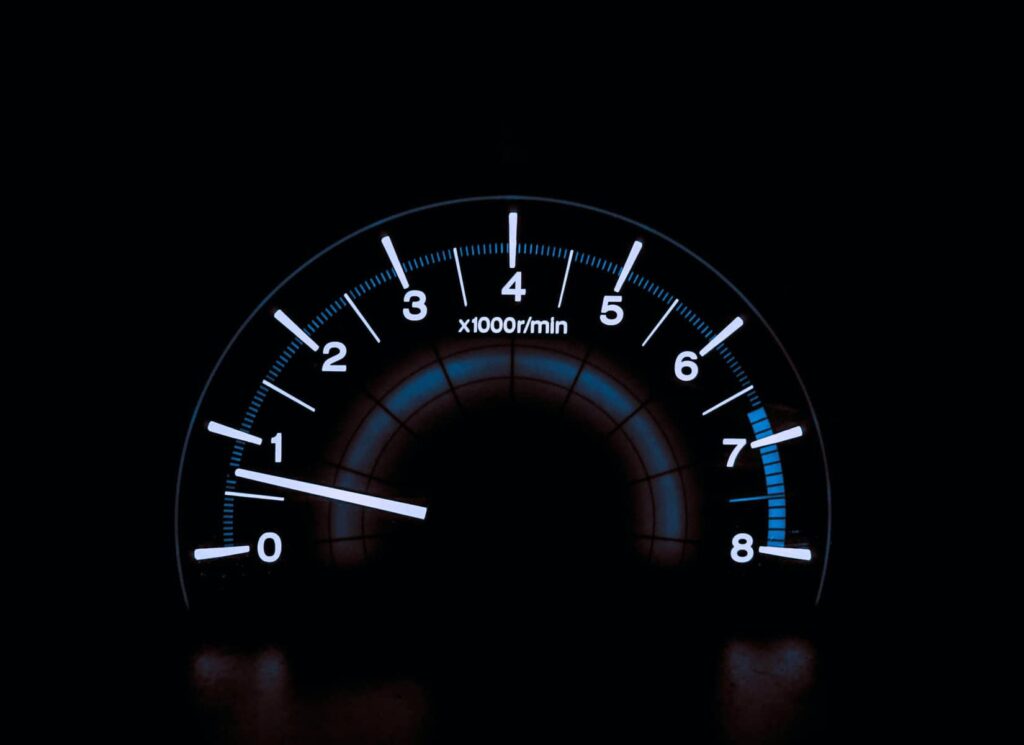Revving your engine when it’s cold might sound like a good idea; in theory, increased load equals increased heat, so surely that’s the answer?
The answer is no; you should avoid revving a cold engine, not because it won’t increase the engine oil and water temperature but because it is unnecessary and could damage the engine! In this article, I will explain what is happening and why you should avoid revving your engine when it’s cold.
What Happens When You Rev A Cold Engine & Why Is It A Problem?
The main problem when revving a cold engine is the cold oil. Engine oil moves slower when it and the engine is cold. By revving a cold engine, the piston rings, seals, gaskets, bearings, and all moving components do not get adequate lubrication from the oil. A lack of lubrication to these parts encourages leaks and damage to appear, contributing to engine failure.
Another concern is most engine sensors, and mechanical valves open at a designated operating temperature; if these sensors get to the temperatures too quickly, the parameters and reasons for opening might cause added stress elsewhere. Again, this is a contributing factor to engine failure.
Although this might sound like revving your engine when cold just once and it will blow up, that is not the case. Revving a cold engine is just a contributing factor to increased internal engine wear and component failure.
How High Should You Rev a Cold Engine?
If you are immediately driving from cold, keep the revs below 4000 rpm and the car at lower speeds, 30 – 40mph, until the car water and oil temperature are at operating temperatures. Shifting should be done at around 3500rpm; getting into a higher gear will keep revs down. The oil and water must reach operating temperatures, which will naturally happen after about 5 – 10 minutes of sensible driving.
The engine will not blow up even if you rev it past 4000 rpm a few times from cold. Modern vehicles require driving to warm, and some moving components will only get up to temperature once you start driving.
Does Revving an Engine Help to Warm It up Faster?
Of course, revving an engine will warm it quicker. To clarify, consider what RPM engines idle at from cold. Most modern engines will idle from cold at a higher rpm, say around 1500 rpm, and then when warm enough, the idle will drop back to 800 rpm. This is because fuel also moves slower when cold, so the engine revs higher, encouraging more fuel to be injected into the engine, which raises the temperature in the engine quicker.
Additional revving and the ECU naturally increasing the engine load will raise the temperature even quicker. But, as we’ve already pointed out, it can weaken the engine and is unnecessary. Instead, give the car a minute or 2 to warm at idle before driving, especially on particularly cold days; that will be enough to have the engine ‘warm.’
If you insist on revving the engine to heat it faster, keep the revs under 2000 rpm. Revving the engine towards the redline with cold oil and neutral will increase the chance and rate of engine wear.

How Long Does It Take for an Engine to Warm Up?
The time an engine takes to get up to temperature is vehicle and fuel-dependent. An idling gasoline (petrol) motor may be up to operating temperatures after 5 -10 minutes; some may take slightly longer.
Diesel engines generally take less than 5 minutes to get warm at idle; any longer, you’re encouraging a soot build-up in the DPF, which could cause black exhaust smoke to come out of the exhaust, amongst other issues.
If driving a cold engine, regardless of the fuel, the engine should be warm and at operating temperatures after about 5 minutes.
Every car differs slightly, so the thing to be aware of is remembering where the needle sits on the water temperature gauge. Make a mental note when you know the car is up to operating temperature; it should be somewhere around 176 – 194 degrees Fahrenheit (80 – 90 degrees Celsius). That way, you have something to work on and will see when the temperatures are close to where they should be before you drive from cold.
Gauging if the oil is up to temperature is slightly different; it tends to warm much slower than coolant (water temperature). If your car has an oil temperature gauge, you have something to work with again if you take another mental note. Failing that, you can never be too far off by going with the water temperature gauge. All cars have a water temperature gauge at a minimum.
How Bad Is It To Redline A Cold Engine?
The engine won’t necessarily blow up. But, the oil needs to circulate and lubricate moving components. While the oil is cold it will flow slower, which means said components will not be lubricated, so the chances of wear appearing increases greatly.
Is It Bad To Rev A Cold Diesel Engine?
Revving a cold diesel engine can cause damage to the engines internals. This is because the oil in a cold diesel engine is thicker and does not flow as easily as it does when the engine is warm.
Final Thoughts
Although revving your engine when cold will not blow up, you shouldn’t do it because of the increased engine wear to components that require oil to lubricate them. Modern vehicles require you to drive them to get all parts up to temperature, so revving the engine from cold at idle isn’t needed.









